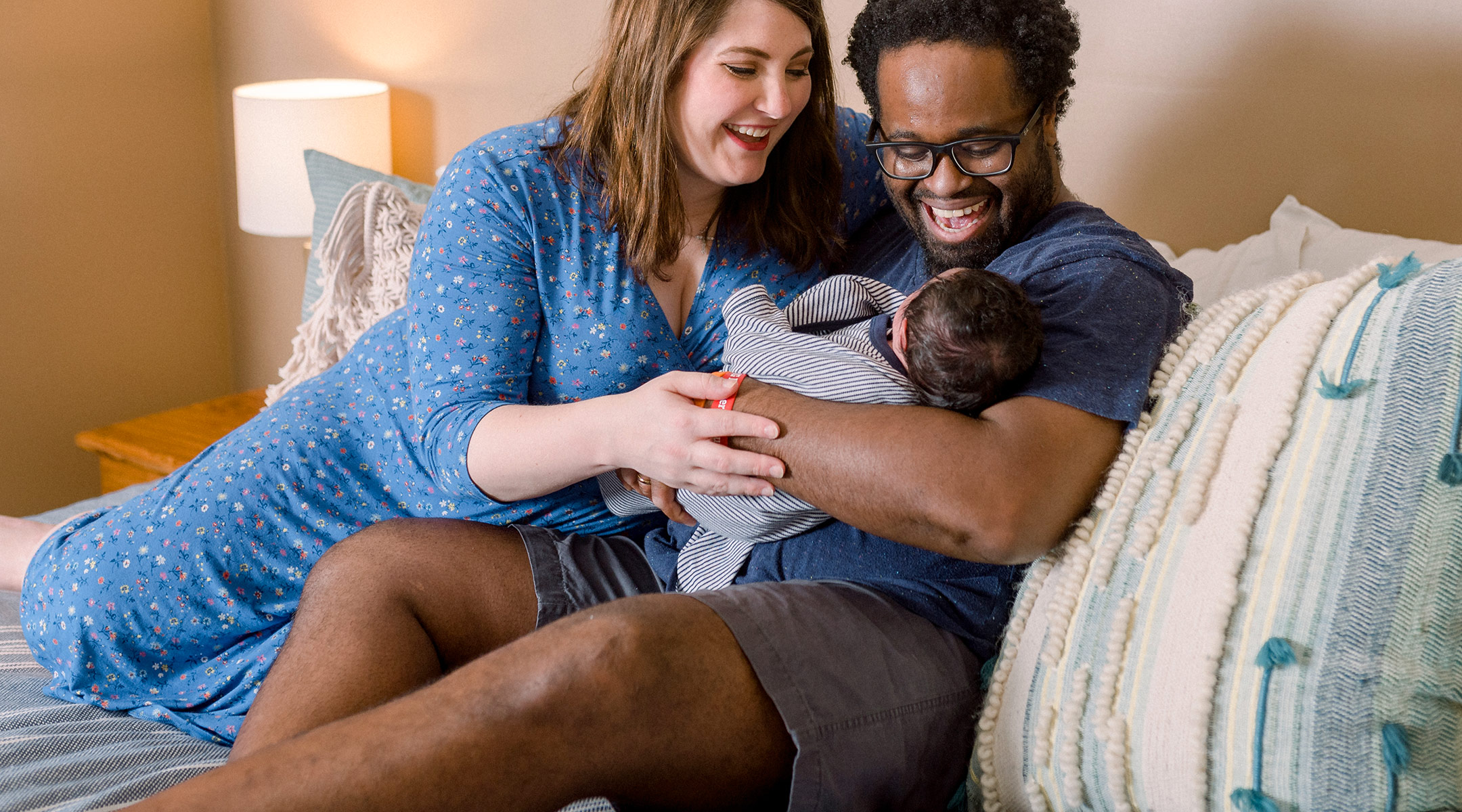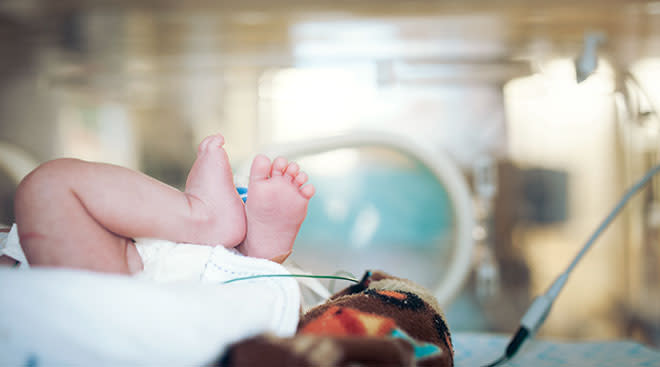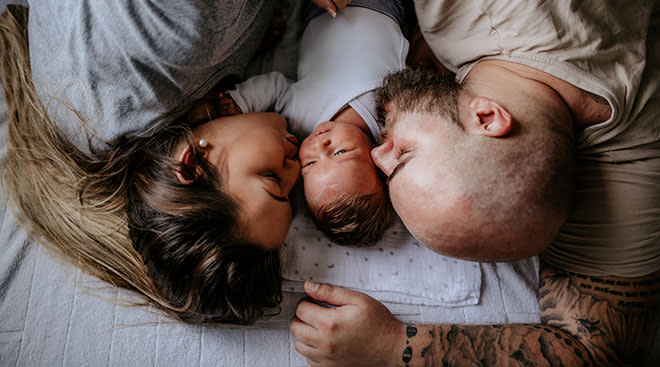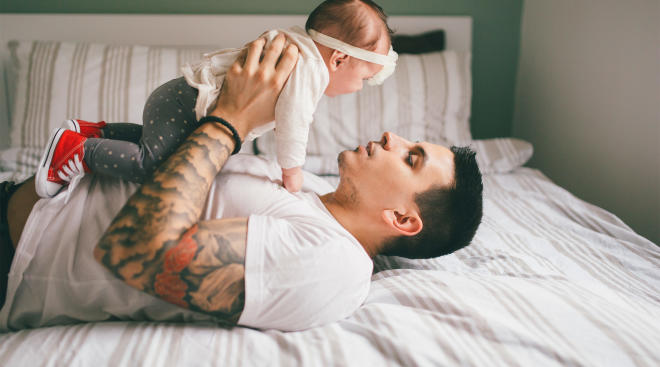Paternity Leave 101: What to Know About Taking Time Off
Stake out any daycare drop-off zone or toddler music class, and the number of dads you see tending to their children’s sticky little hearts illustrates something we’ve known for a while: The rhythms and rituals of parenthood are no longer the preeminent domain of women.
But while the number of fathers wanting to be more hands-on in their kids’ daily lives has steadily increased over the years, when it comes to working parents taking time off to bond with their newborns, fathers and other non-birth partners traditionally get the short end of the stick. According to the Society for Human Resource Management, American employers give moms about double the amount of paid time off than they give dads, and research from the Families and Work Institute shows that a higher number of workplaces provide more than the required amount of adoption/foster care leave than they provide more than the required amount of paternity leave.
“I don’t want to give a doom-and-gloom picture—things are improving for dads,” says Cynthia Calvert, an employment lawyer and senior advisor for family responsibilities siscrimination at the Center for WorkLife Law. “We’re seeing a recognition that the traditional model of male-as-breadwinner when he becomes a dad is not good for society, not good for the man, not good for the employer and not good for children.”
So what does paternity leave in the US currently look like, what are dads and other non-birth partners entitled to and how can they prepare for whatever paid time off their employers grant them? Keep reading.
Paternity leave is the time off from work that a father takes after the birth or adoption of a child. And unfortunately, it’s not something all companies offer their employees. Under the federal Family and Medical Leave Act, eligible workers—including non-birth partners—are entitled to 12 weeks of unpaid time off from work following a birth or adoption, although not everyone qualifies for this (see more below). But when it comes to paid time off, how much time and how much money you get is entirely up to your employer. According to the Families and Work Institute, about one in five employers barely offer any paid paternity leave. In fact, only 17 percent of US workers have any access to paid parental leave.
For employees who do get paid leave, how long paternity leave lasts runs the gamut, Calvert says. Many smaller employers offer four to six weeks paid leave, while the Bill Gates Foundation now offers six months for both mothers and fathers, but a typical package seems to include six weeks for fathers and non-birth partners to bond with baby.
However, things are finally starting to change. Needled by a workforce made up of lots of millennial dads and other non-birth partners who see parenthood as integral to their identity, employers of all sizes—including, as recently as 2018, Walmart and Starbucks—are expanding paid parental leave benefits to employees across their ranks, allowing front-line workers like baristas and other hourly-wage earners to take protected time off to bond with their newborns.
“The momentum in paid family leave with employers expanding their policies is tremendous,” says Annie Sartor, campaigns director for Paid Leave for the United States (PL+US), a non-profit that helps American workers advocate for better paid leave policies. “But we know that public policy is the way we’re going to win paid leave for everyone.”
Under FMLA, people who work for companies with 50 or more employees are eligible for 12 weeks of job-protected leave per year, provided they’ve worked for their employer for at least 12 months. To qualify, you must have worked at least 1,250 hours over the past year and work at a location where the company employs 50 or more employees within 75 miles.
FMLA also guarantees that you get your position back, or at least a very similar post without loss of pay, hours, benefits or main responsibilities you had before taking leave. You can’t be fired or discriminated against for taking parental leave, and the FMLA ensures that you get to keep all benefits while you’re out, including any employer-provided health insurance.
There is one caveat if your company can’t operate financially without you: Employers can deny reinstating your job after your leave if you’re considered a key employee, or a salaried person among the highest-paid 10 percent of employees.
Given that the US is one of just three countries without paid maternity leave, it’s not surprising that a federal paternity leave law that guarantees pay doesn’t yet exist—although both President Trump and Congress have said they’re working on legislation for a national paid family and medical leave plan.
Depending on which state you live in, however, you may be legally entitled to paid paternity leave. Seven states plus Washington D.C. have passed mandates for paid family leave programs: California, Connecticut, Massachusetts, New Jersey, New York, Rhode Island and Washington. While all guarantee at least four weeks of paid family leave (Connecticut, Washington State and Massachusetts allow up to 12), other variables, including who is eligible and how much pay is offered, vary. In New York, for example, a new parent who has worked for an employer for 26 or more consecutive weeks can take up to 10 weeks to bond with a new child; compensation is 55 percent of the worker’s average weekly wage. In 2021, that should increase to 67 percent.
As time rolls on, we can expect more employers to expand their paid paternity leave options. Many are using generous leave packages as a perk to attract and retain top talent. Those that are especially enlightened, Calvert says, are dropping “paternity” from their benefits and using more broad language like “paid parental” or “paid family” leave. “‘Maternal’ and ‘paternal’ bring to mind those traditional sex roles—how we think women and men should act—and that opens a workplace up to all sorts of lawsuits when biases about gender roles come into play,” says Calvert, noting that in 2016, the Center for WorkLife Law saw an 336 percent uptick in the number of paternity leave cases, which involved denial or discouragement of leave, retaliation for having taken leave or unequal lengths of leave for men and women.
Protection against gender discrimination lawsuits is one reason that many firms now offer men and other non-birthing parents the same amount of time to bond with babies that mothers receive, although birth mothers usually receive a week or two more to provide for time to recover physically.
When you’re considering taking family leave, keep the lines of communication open. Let your employer know you’re expanding your family as soon as it’s practical to break the news so they have plenty of time to think about your temporary replacement. Generally, you must give at least 30 days advance notice of your need to take FMLA, if it’s possible.
While it’s illegal for companies to discriminate against workers who take leave, many new parents, especially fathers, worry they’ll appear less dedicated to their jobs if they take time off. That’s why it’s a good idea to gauge the dynamics around your workplace’s unconscious bias, Calvert says. If you’re nervous that your employer will regard you as not being committed to your job, offer ideas upfront on things like how your work will get covered when you’re away .
If you’re taking FMLA leave, the law says new parents aren’t entitled to take that time off in intermittent chunks, but ultimately the time-off arrangement is up to your employer. Talk to your boss and HR rep: It might be more beneficial for you and your workplace to split your leave up in pieces so workflow is less impacted.
Once you’re back, “it’s a good thing to be grateful to the people who covered for you and if you can, take the load off someone else—that shows that you’re committed,” says Calvert.
Above all, if you’re lucky enough to work for a company that provides paid family leave, take it! “I’d say that the way forward for this issue is for men and other non-birthing parents to be very public about taking the time,” Sartor says. “Too often, caregiving is seen as a women’s issue—when men are advocating for equal access and then using it, that’s where we start to see the shift in the culture.”
Published July 2019
Plus, more from The Bump:
Navigate forward to interact with the calendar and select a date. Press the question mark key to get the keyboard shortcuts for changing dates.




















































